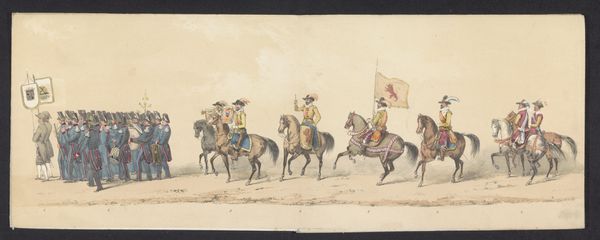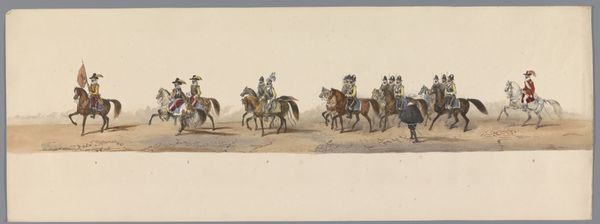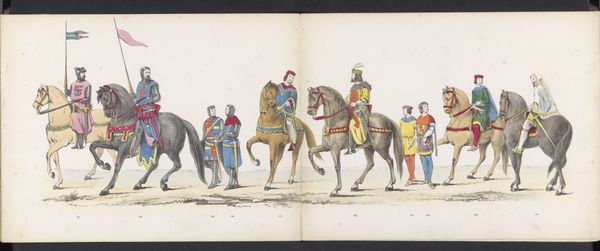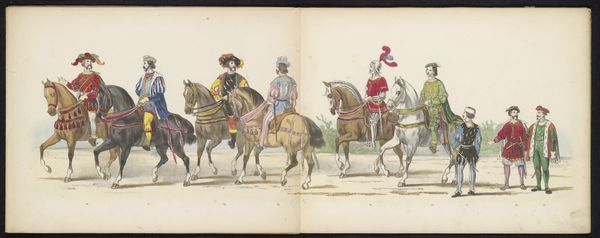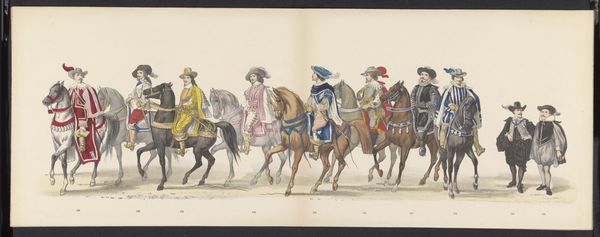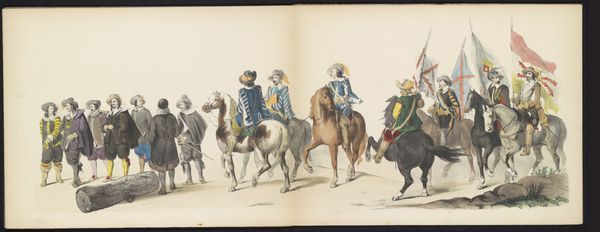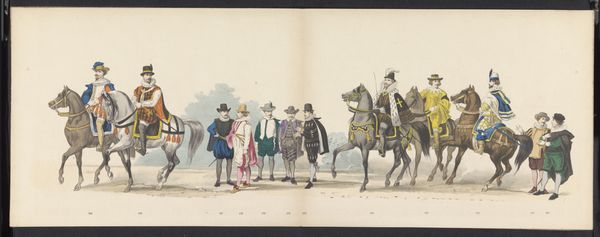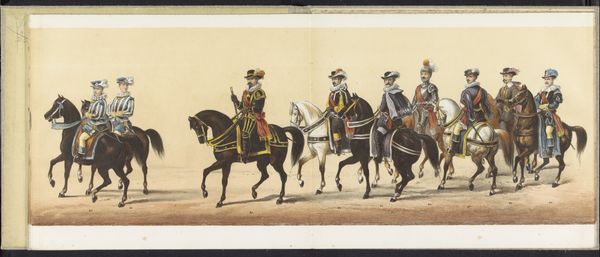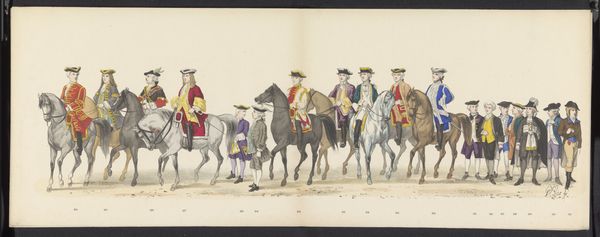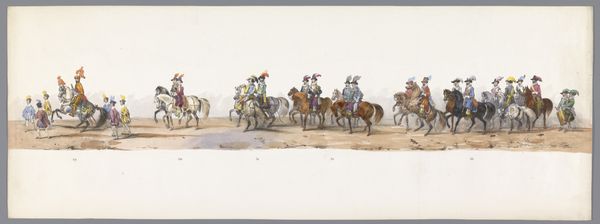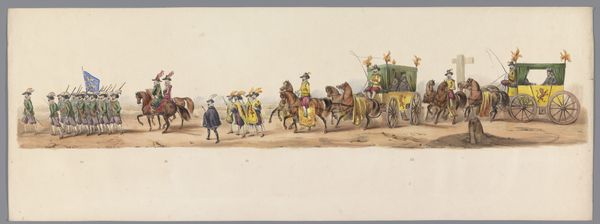
Historische optocht door studenten van de Groningse Hogeschool, 1850 (plaat 3) 1850
0:00
0:00
johanneshermanusvandeweijer
Rijksmuseum
drawing, paper, watercolor
#
drawing
#
narrative-art
#
landscape
#
paper
#
watercolor
#
coloured pencil
#
genre-painting
#
history-painting
#
academic-art
#
watercolor
#
realism
Dimensions: height 233 mm, width 620 mm
Copyright: Rijks Museum: Open Domain
Editor: Here we have Johannes Hermanus van de Weijer's "Historical Parade by Students of the Groningen High School, 1850". It's a watercolor and colored pencil drawing on paper and seems to be documenting an event. I notice the detailed depiction of clothing. What do you see in this piece, especially considering the artistic techniques and materials used? Curator: What interests me immediately is the means of production of this piece. Think about it: in 1850, creating these drawings – using specific pigments, sourcing paper, the labor involved – was tied to the economic realities of the artist and his patrons. We're seeing a documentation, yes, but also a product of specific materials and skills carefully crafted. Editor: So, the choice of watercolor and colored pencil is significant? Was that the common process? Curator: Precisely. Oil paintings would have been for formal portraiture or major commissions. Watercolor and pencil on paper suggests this piece, while still commemorative, was created for wider distribution, perhaps reproduced as prints. The layering of watercolour allows the artist to build the costumes in great detail. This brings a vibrant liveliness to the subjects of the artwork. Who could access or consume such an image, and what did this materiality signify in 1850? Editor: It's interesting to think about this as an accessible artwork. How would that access have played a role in documenting that history? Curator: By creating multiple copies that could then be owned. Remember that drawings like these weren't necessarily viewed as "high art". Its value lied in its documentation of a place and time as well as celebrating certain values, but still, it brings forward ideas on labor, commodification and artistic worth in an academic structure. What might that imply about the artist's relationship to the event itself? Was it celebratory or more observational? Editor: That gives me a whole new perspective. Thinking about this drawing in terms of its material existence and circulation provides a really interesting lens to understanding this event. Curator: Exactly. We can then speculate on its broader influence on society. Material conditions shape our access to, and therefore our understanding of history, art, and culture.
Comments
No comments
Be the first to comment and join the conversation on the ultimate creative platform.
